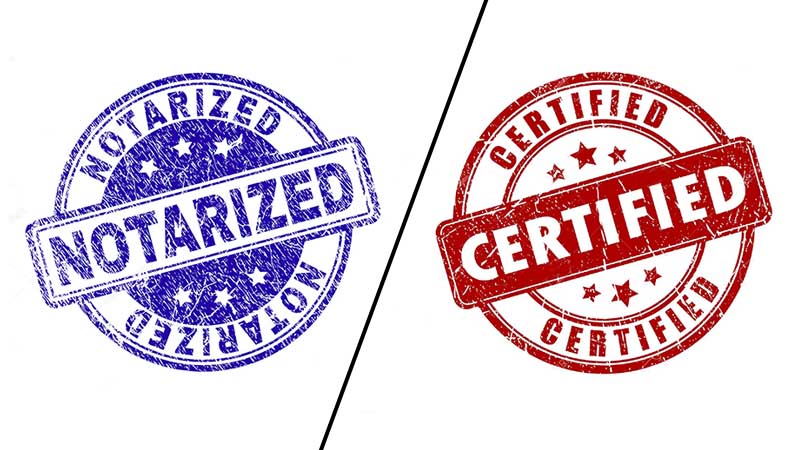Understanding the Difference
To many people unfamiliar with the translation industry, the difference between a notarized and certified translation is not obvious. Contributing to the confusion is the fact that both types are considered official translations. Assuming that a notary—a public official—certifies translations, many clients readily opt for a notarized translation service only to find that their notarized translations are rejected by the respective authorities. As a result, people lose money and time and need to have their translations redone by a certified translator. So, why does it matter so much?
Certified translation is a service provided by a professional translator who is certified by a professional organization. In Ontario, the organization that attests to its members’ high level of competency is the Association of Translators and Interpreters of Ontario (ATIO). To achieve the reserved title of certified translator, candidates must pass several examinations and sign a strict code of ethics. Certified translation is preferred by most government and professional bodies in Canada because the level of security that comes with a certified translation is higher than that of a notarized translation. The certified translator’s seal and declaration of accuracy are sufficient to ensure an accurate and complete translation.
A notarized translation is not a translation certified by a notary public, as may be erroneously deduced from its name. In fact, notary publics do not check the quality of the translation. Instead, they only verify the identity and authenticate the signature of the person who performed the translation. The translator could be any person, regardless of their credentials, who swears an oath to the accuracy of their translation in front of a notary public. Thus, there is no governance over such translations, and notarization can be obtained by a simple swearing of an oath. Notarized translations are usually required when a translation needs to be validated outside the country and legislation states that notarization is required for the document to be valid.
Certified Translation ≠ Certified Copy
Sometimes, clients try to be extra cautious and request both a certified and notarized translation of the same document. Because the two types are considered official translations, this double effort is simply unnecessary. The source of the confusion most likely lies in some government agencies’ requirement of an English or French translation along with the notarized (certified) copy of the source document.
A true certified copy, sometimes called a notarized copy, is a photocopy or scan of the source document with the signature and/or stamp of a notary public stating that it is an exact copy of the original document. However, the requirement to submit a notarized copy of the source document applies only to instances when a notarized translation is required. In the case of a certified translation, a certified translator is the one who stamps and signs each page of both the translation and the source document for verification purposes, and there is no need to involve a notary public.
Suspicious Minds
Most of the time, those who are unfamiliar with the institution of certified translators are the ones utterly concerned about the validity of a certified translation. For example, in Russia, there is only one type of official translation: a notarized translation. Neither certified nor sworn translators exist there, and notarization is considered the only secure way of providing a translation with legal value. In Canada, however, a certified translation is preferred by not only government agencies and bodies but also all consulates and embassies of the former Soviet republics: the Russian, Belarusian, Kazakh, and other embassies and consulates in Canada.
What Is Required, Then?
To find the requirements for the type of translation to be submitted, a good place to start is to carefully examine such requirements on the respective authority’s or organization’s website. In most cases in Canada, you will need a certified English or French translation of your supporting documents for immigration, academic credentials, medical documents, or business and legal paperwork. However, if the document is intended for use outside of Canada, you may be required to get the document translated and then notarized to go through the authentication process at Global Affairs Canada. Still, you will never be required to have the translations of your documents certified and notarized at the same time.
Over the past several years, Canadian immigration authorities have gone back and forth, requiring certified translations of all supporting documents at times, then allowing notarized translations if desired by the applicant, and then changing the requirements once again. Immigration, Refugees, and Citizenship Canada (IRCC) eventually settled on requiring those who apply from within Canada to submit certified translations, and those who apply outside of Canada can submit notarized translations. However, if the authority deems the notarized translations unacceptable, the translation must be redone by a certified Canadian translator.
If, after reading this article, you are still agonizing over translation requirements, you can always contact the respective authority or organization and learn from the source—or rather, ask me!
